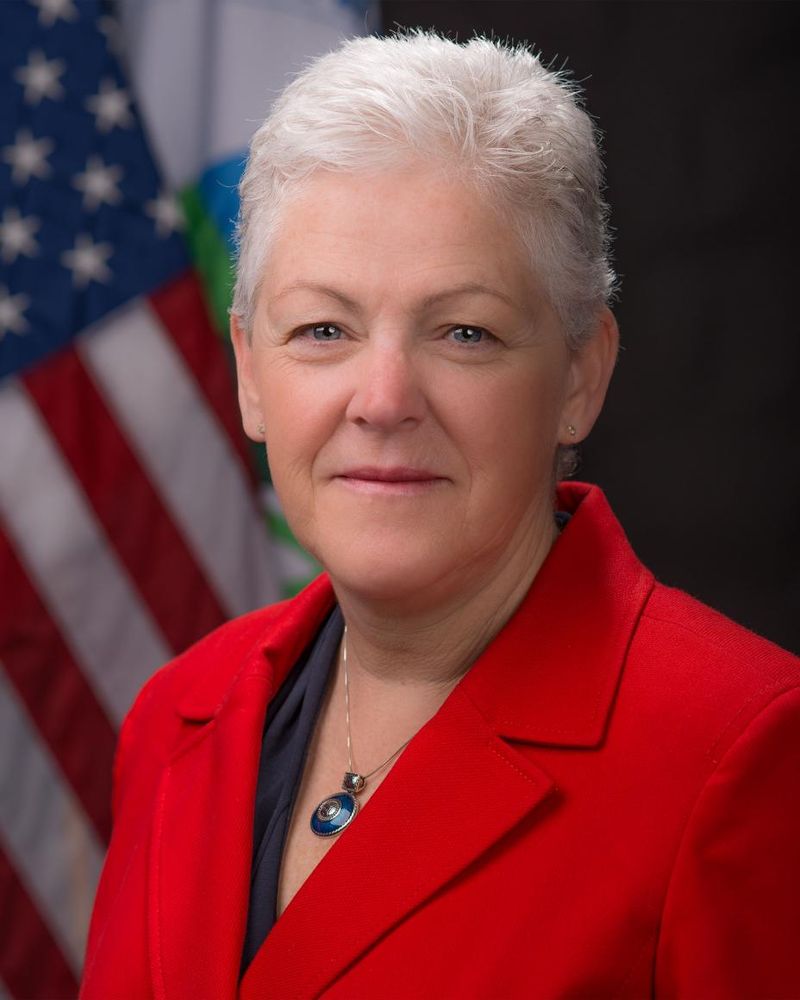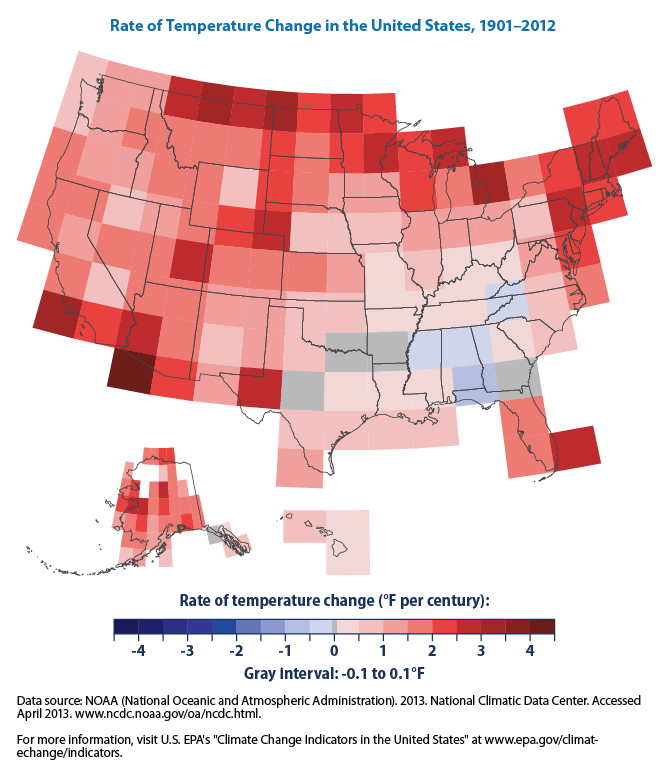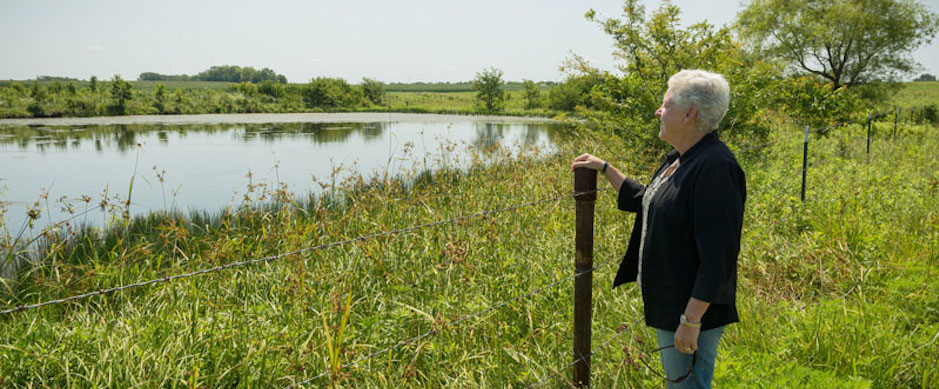
Gina McCarthy is the Administrator of the U.S. Environmental Protection Agency and has been a leading advocate for common-sense strategies to protect public health and the environment.
McCarthy was appointed by President Obama in 2009 as Assistant Administrator for EPA’s Office of Air and Radiation and previously served as the Commissioner of the Connecticut Department of Environmental Protection. During her 30-year career in public service, she has worked at both the state and local levels on critical environmental issues and helped coordinate policies on economic growth, energy, transportation, and the environment.
McCarthy delivered the keynote address at the McCourt School of Public Policy’s annual LEAD conference and spoke to the Georgetown Public Policy Review about EPA’s proposed Clean Power Action Plan, her career, and thoughts on leadership.
Georgetown Public Policy Review (GPPR): What would you say to Americans who are either skeptical or apathetic about climate change?
Gina McCarthy (GM): First, I’d say look out your window. We no longer predict future climate impacts; we’re experiencing them and paying the costs. And public opinion reflects that. A majority of Americans say global warming is a serious problem, and that we need to limit carbon pollution from our power plants. And thanks to President Obama’s leadership, we’re already taking action across the federal government to prepare for climate impacts we cannot avoid. On October 31, federal agencies released Climate Adaptation Plans to reduce their greenhouse gas emissions and prepare for climate impacts like flooding, sea level rise, and severe weather.
Now’s the time to act on climate. And the good news is, the actions we’re taking not only safeguard public health and the planet—they can help grow the economy and bolster national security.
GPPR: How does EPA’s Clean Power Plan seek to address the public health and national security concerns around climate change?
GM: Carbon pollution from power plants comes packaged with other dangerous pollutants like particulate matter, nitrogen oxides, and sulfur dioxide that lead to respiratory problems like asthma. And although we limit pollutants like mercury, sulfur, and arsenic, currently there are no limits on carbon pollution from power plants, our nation’s largest source.
From a public health standpoint – when we cut carbon pollution, we also cut the smog and soot that come with it. In 2030 alone, we’ll cut the pollution that causes smog and soot 25 percent more than if we didn’t have this plan in place—avoiding 100,000 asthma attacks and 2,100 heart attacks. And when you look at the economics – every dollar we invest in our Clean Power Plan, we get 7 dollars back in health benefits alone. Second, when we lean into climate action, we promote energy independence and security. Clean energy is home grown, and it creates good paying jobs here at home. And increased energy efficiency means we need fewer resources—so less imports—to meet demand. Those are both things our Clean Power Plan encourages states to do.
GPPR: The plan seeks to reduce 30% of power plant carbon emissions by 2030. What challenges do you expect to encounter in achieving this goal?
GM: On the surface, it would seem that unique energy mixes and circumstances across states and regions would be a challenge for a national program to reduce carbon pollution. But to be clear, the Plan does not set out a national goal. It identifies a range of measurable, cost-effective, and state-specific goals each state can use to reduce carbon pollution from their power plants. The Clean Power Plan hinges on flexibility, so we can mitigate the top-down challenge by making it bottom-up, and letting states chart their own low-carbon path forward in whatever way works best for them. If every state achieves their goals, then that will amount to a 30% overall reduction of carbon pollution by 2030, which is where that number comes from.

GPPR: What can individuals do on a day-to-day basis to tackle climate change?
GM: You can do a lot. Remember—think globally, act locally! The first step is to get a sense of their current carbon footprint. At www.epa.gov, we have easy-to-use carbon footprint calculators for individuals and businesses to help folks estimate their current carbon footprint, and there are also lots of great ideas on simple steps you can take to reduce those footprints. Don’t be afraid to get involved—at home or at school. Universities nationwide are hotbeds for climate action, including Georgetown; take advantage of it. And finally, from the food we eat to the weather outside, keep learning and talking about how changing climate impacts your life.
GPPR: How does the plan promote environmental and economic growth? Critics of the plan say that it will raise energy prices and significantly impact local economies especially in coal-producing states.
GM: I don’t accept the premise that you can’t have a healthy economy and a healthy environment at the same time. In fact, history shows a healthy economy depends on a healthy environment.
First, the fact is, we’re already paying the price for climate inaction; those costs are not always line-itemed on our bills but they are real. As temperatures and seas rise, so do insurance premiums, food prices, medical bills, and more. 2012 was the second costliest year for natural disasters with a price tag of $110 billion, and taxpayers and businesses are fronting the bill.
Second, the premise that our plan will “significantly” increase costs for consumers is just not true. Any small, short-term change in electricity prices would be within normal fluctuations the power sector already deals with. And any small price fluctuation is dwarfed by huge benefits. In total, the Clean Power Plan will deliver climate and health benefits of up to $93 billion in 2030. And for soot and smog reductions alone, for every dollar we invest in the plan, families will see $7 in health benefits. And on top of all that—when states take advantage of energy efficiency opportunities, in 2030, average electricity bills will actually be 8 percent cheaper, not more expensive.
And third, climate action and clean energy isn’t just about protecting our health; it’s also about protecting our pocketbooks and supporting economic growth. For example, we’ve already regulated greenhouse gases from our vehicles when EPA and DOT set historic greenhouse gas fuel efficiency standards for cars and trucks. Those standards are cutting pollution, saving families money at the pump, and fueling a resurgent auto industry that’s added more than 250,000 jobs since 2009. Automakers didn’t fold when we regulated their greenhouse gas emissions, they flourished. The investments we’ve made in clean energy under President Obama’s leadership are paying off: since President Obama took office, wind energy has tripled and solar has grown ten-fold. That’s thousands of jobs that can’t be shipped overseas. Renewable energy on public land by itself accounts for 20,000 jobs.
So for the sake of our health and our children’s future—we must act on climate. And when it comes to protecting public health while keeping energy affordable and reliable, and keeping our economy strong—history proves EPA has a pretty good track record.
GPPR: The UN Climate Change Conference is scheduled for fall 2015 in Paris. With climate change presenting a global concern, what are your thoughts about establishing a legally binding universal agreement on climate?
President Obama in his Climate Action Plan laid out a blueprint for the US to lead internationally on climate change. Secretary of State John Kerry and Special Envoy for Climate Change Todd Stern are working hard to make sure we do. EPA’s role in tackling climate change here at home is a big part of the international conversation. When I went to the UN Climate Summit earlier this fall with President Obama, international leaders were incredibly energized about US action. The world is taking note that the US is serious about climate action, and I expect that will inspire more international engagement – both in the private and public sector.
GPPR: You’ve advised policymakers from both sides of the aisle, including President Obama and former Massachusetts Governor Romney, on tackling global warming and climate change. How can Republican and Democrats coalesce around this issue?
GM: Reducing pollution and fighting illnesses like asthma is not a partisan issue. All Americans, regardless of who they vote for or what their party affiliation, want their kids to have clean air to breathe and a safe, stable environment to live in. And we know without a doubt that we can cut the carbon pollution fueling climate change and build a reliable, affordable, clean, and low carbon energy future—because we already see states of all stripes coming together on climate action. Almost every state has a renewable fuel standard and energy efficiency programs, and a few regions already have market programs to reduce carbon pollution. So both parties are already coming together on this in so many ways because it’s good sense. We just need federal action that can ensure that every state is at the table working together.
GPPR: Can you talk about how your state and local experience has prepared you to lead the EPA?
GM: If there’s one thing my experience taught me, it’s that success depends on partnership between federal, state, and local levels. Every level has a valuable role, but to make the most impact, and for people and businesses to get the most bang for their buck, we all need to come to the table and hash out commonsense policies that work best in the places we’re trying to get them to work. What makes sense in New England might be less than ideal in the Pacific Northwest. What makes sense in the Southwest probably doesn’t make the same sense in the Midwest. I’m confident that EPA’s Clean Power Plan is smart policy, because it is nationally powered but locally sensitive; the flexibility our plan allows will help states achieve their carbon pollution reductions.
GPPR: What is essential to being a good leader?
GM: Know you don’t have all the answers. Make sure you solicit and listen to many voices and diverse opinions. Surround yourself with smart people. Be confident, make decisions, and keep moving forward. And never stop appreciating the dedicated, hard-working people who help make good things happen.
This interview was conducted on November 12, 2014.
About Newsmakers: Launched during Georgetown Public Policy Review’s 20th Anniversary year, Newsmakers is a series of high-profile interviews with leaders making news in the world of policy, politics, government, business, non-profits, and philanthropy.
Jamie Obal’s policy interests include international trade, urban policy, and economic development. Prior to graduate school, she worked for the former Mayor of Los Angeles. She holds a B.A. in Political Science and English from the University of California, Irvine. Jamie is originally from Los Angeles, California and enjoys volunteering for political campaigns.
